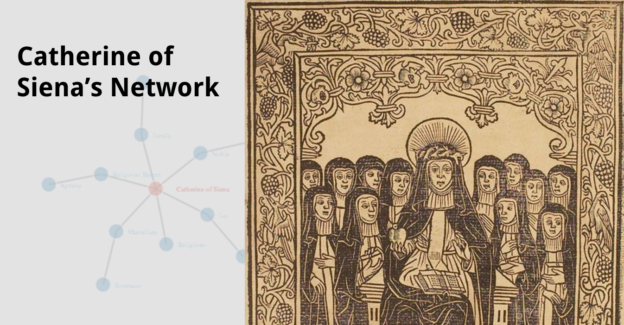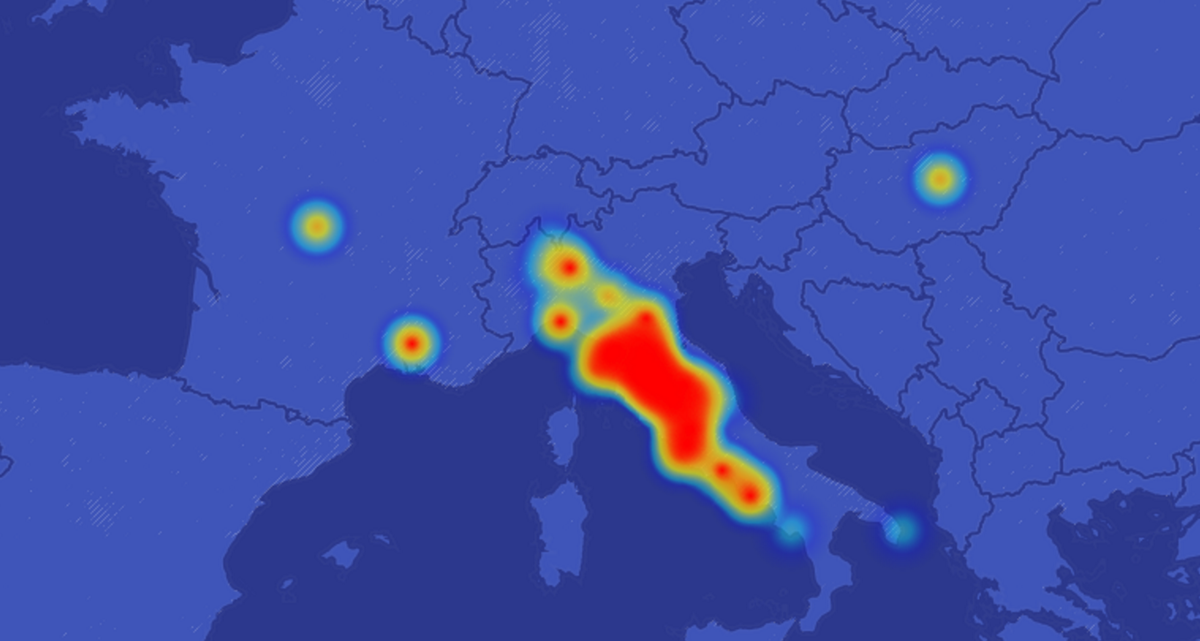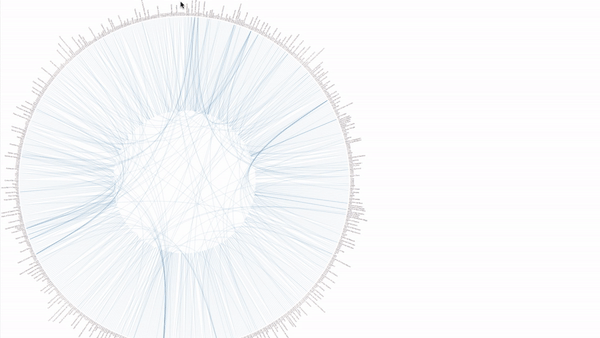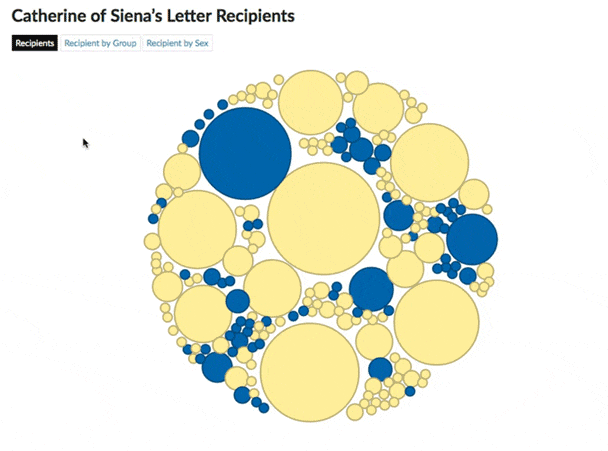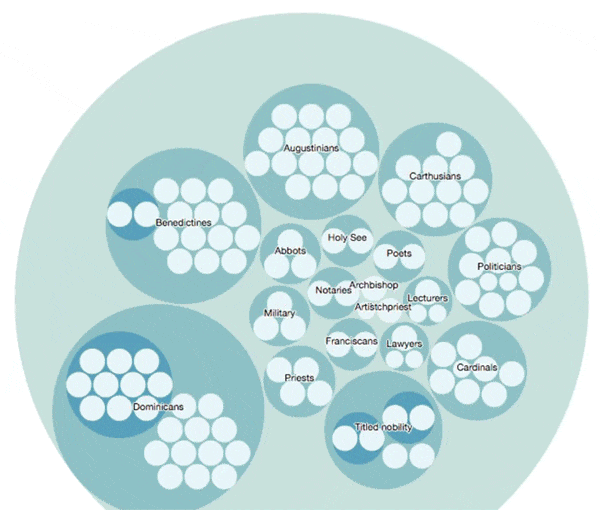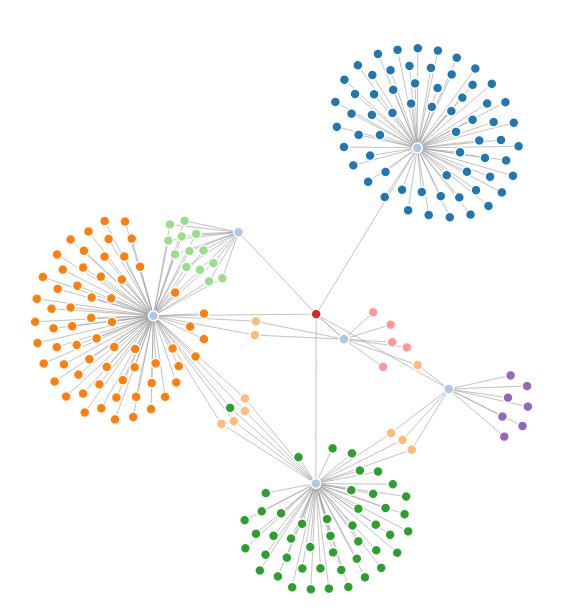Here are my remarks from the NYCDH Week Kickoff Gathering at the Graduate Center, CUNY on February 6, 2017.
Born in 1347, the year before the plague ravaged her hometown, Catherine of Siena would become a prolific writer to deliver her activist spirituality throughout 14th-century Europe. Choosing a religious life against her family’s wishes, Catherine initially approached spirituality in a traditionally feminine way — as an ascetic who stayed in her room to meditate and pray. However, she would be compelled to leave her room and become embedded in her urban community of Siena. Located on the ancient pilgrimage route to Rome, Siena offered her contact not only with her geographical neighbors but also with many visitors. Catherine would also go on to travel throughout the Italian peninsula and Europe, and even serve as an ambassador to the Pope who was based in Avignon, France at the time. By joining the lay Dominican group of the mantellate, Catherine was also afforded access to larger circles of people through her affiliation with the Dominicans, and was able to engage with people of the world by living outside of a monastery, not unlike her Italian predecessor, Francis of Assisi. Carefully, she balanced her approach to both operate within the confines of Italian religious culture, while also pushing against it in her activist commitment to social justice.
A prolific writer, we currently have nearly 400 of Catherine’s extant letters that were sent throughout Italy and into Europe. We also have her copied prayers, and a book-length dialogue that was translated into Middle English in the 15th century. Despite her productivity, the Italian vernacular language was not considered to be true literacy in a Latinate world. Latin, which was the language of upper-class men, intellectual humanists, and the church, presented a clear barrier that prevented common people and women of all classes from accessing information. Though Catherine was interested in participating in the same language as this separate and self-monitoring exclusive group (as she worked to learn Latin), she consciously and emphatically would choose Sienese Italian as her language of writing and speech. As a spiritual figure doing good work in the world, offering comfort, advice, and care to the prisoners, penitent women, and ill of Siena, how could she choose to communicate in a language they would not be able to understand? Having learned to write through her own community, and being a publicly-engaged woman who addressed her fellow Sienese in speeches in the piazza or through dispatched letters, Catherine was working to include the poor, sick, and uneducated, rather than exclude them. As both a learner and a teacher, who was tasked with delivering messages of the divine to others, the local language of her time was incredibly instrumental to gain followers and communicate. In an era when most women who challenged the status quo were considered to be witches, Catherine would eventually be made a saint. Building a network around her, Catherine connected disparate and diverse people together: she was a force that drove community engagement through innovating the emerging Italian language and utilizing the technology of writing.
Using the letters as a database, I carried out digital network visualization with the statistical programming language R as well as JavaScript and the D3 library to analyze Catherine’s network and output, rendering some of the trends of her letter-writing career more obvious. Social network analysis investigates social structures, using nodes (people and things) and the ties that connect them to visualize data.
In this flare network diagram, the nodes are comprised of letter recipients and letters, and the curved lines represent links between and among letters and their respective recipients. The nodes here are rendered as names of the recipients in text, and the letters are referred to by number. Time is also represented, moving clockwise from the top. When hovering over the name of a letter, the recipient(s) and the tie connecting the letter to them is highlighted, making it apparent which letters are being written to a single addressee, and which are addressed to a group (about half of the total). When hovering over the name of a recipient, the relevant letters addressed to him or her are highlighted, displaying how many letters that recipient received, and whether the letters were clustered throughout Catherine’s letter-writing activity or if they were limited to a particular time period. As the ties connecting letters and recipients will cluster more dramatically to certain people, it becomes more obvious who are the most important nodes.
Another way of visualizing and sorting this data is through an interactive bubble chart that considers letter recipients by sex and group, which is broken down by lay, religious, and noble. Catherine moved about each of these groups with great facility, being able to both support and receive help from people in different positions. The size of each of the circles shows the number of letters that each recipient received. Yellow circles represent male recipients and blue circles represent female recipients. With the diagram divided by groups, we can see that the religious group received the most letters, with lay and noble more equal in distribution. Men also received more letters than women did, and many individual men were frequent recipients of Catherine’s epistles. However, about a third of her letters were written to women, which is indicative of female literacy and a community of literary exchange with female friends and disciples who also served as her earliest scribes. Though many of these women likely did not read and write in Latin due to their being precluded from masculine discourse, they were still capable at creating this broader community of written exchange in Italian.
This steamgraph visualization shows Catherine’s letter activity over time to the same three groups: religious in blue, noble in yellow, and lay in orange. Over the course of the period of Catherine’s letter-writing career, spanning from 1374 through 1380 (the year of her death), we see the amount of letters proliferate between the years of 1377 and 1379. The dip in letters in 1376 is the year that Catherine traveled as ambassador to Avignon. What is particularly interesting is that the letters to the nobility continue to increase overtime, suggesting that Catherine has a greater need to write to these connections as she becomes more politically involved and needs greater support in terms of powerful interlocutors and perhaps financial backing. It also suggests that she was able to build a network of well-connected individuals as her reputation grew.
The specific professions that Catherine interacted with are visualized in this bubble diagram. It breaks down groups by religious orders (Benedictines, Dominicans, Augustinians, Franciscans, and Carthusians), abbots, priests, archbishops, cardinals, popes, and also non-religious professions. In the diagram it is clear that the Dominicans make up the largest group that Catherine interacted with, but it is significant to see that she is well-connected among politicians and religious people who are of high rank. Catherine also enjoyed network connections to other professionals such as lawyers, lecturers and notaries, and even enjoyed the company of poets.
In this network diagram, Catherine is the red node in the center connected to various groups shown in light blue, along with intersections for each group. The dark blue group are the lay people in her network, including figures like Niccolò di Toldi, whose head she caught in her lap following his execution, and the tailor Francesco di Pipino and his wife Agnesa from Pisa. The pink nodes are part of a family cluster, and the purple nodes are part of a mantellate cluster, both of which include the orange node of Lapa, Catherine’s mother who later became a member of Catherine’s order. The green cluster shows the members of the nobility that Catherine had interactions with, along with three orange nodes that were both nobles and mantellate. Though the network of nobles is not as large as the lay or religious networks, it is clear that they are still a numerous group, and the overlap with the mantellate show how close some of the members in this group were to Catherine. Between the green nobility cluster and the orange cluster of the religious are some more overlaps. The light green group is comprised of the Augustinian hermits that Catherine interacted with, including the Englishman William Flete — a connection that may have aided the adoption of her text in the English religious women’s house Syon Abbey in the late 15th century.
As many of Catherine’s correspondents were scribes, translators, writers and orators, who diligently collected her writing, and eventually attested to her sanctity, the literary network that Catherine developed around herself proved to be a success. The community-building nature of Catherine’s outreach and expression of religiosity are evidenced in the archive of letters that we have today.
